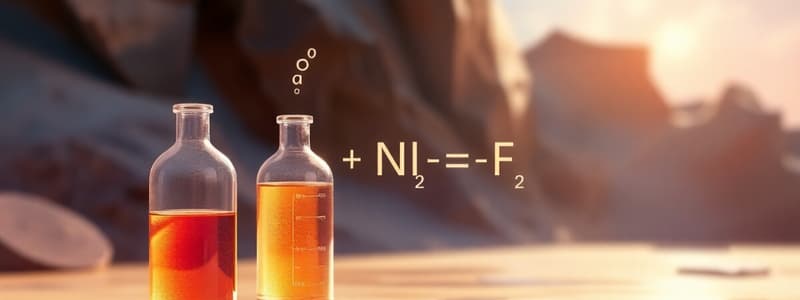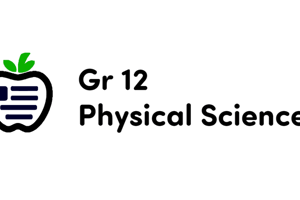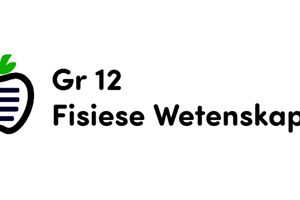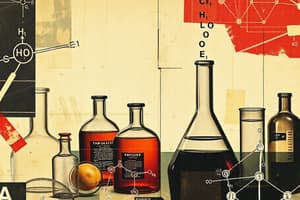Podcast
Questions and Answers
The empirical formula of copper oxide is Cu2O.
The empirical formula of copper oxide is Cu2O.
True (A)
If a student burns 9 g of magnesium in excess oxygen, 25 g of magnesium oxide will be produced.
If a student burns 9 g of magnesium in excess oxygen, 25 g of magnesium oxide will be produced.
False (B)
To produce magnesium oxide, the reaction requires 2 moles of magnesium for every mole of oxygen.
To produce magnesium oxide, the reaction requires 2 moles of magnesium for every mole of oxygen.
True (A)
56 liters of carbon dioxide is produced from burning 30 g of carbon in excess oxygen.
56 liters of carbon dioxide is produced from burning 30 g of carbon in excess oxygen.
The mass of oxygen in copper oxide calculated was 0.6 g.
The mass of oxygen in copper oxide calculated was 0.6 g.
The empirical formula of glucose is C6H12O6.
The empirical formula of glucose is C6H12O6.
The percentage composition of CaO by mass is 71.43% calcium and 28.57% oxygen.
The percentage composition of CaO by mass is 71.43% calcium and 28.57% oxygen.
To find the relative molecular mass of CaO, you add the atomic masses of calcium and oxygen.
To find the relative molecular mass of CaO, you add the atomic masses of calcium and oxygen.
In the formula of glucose, the value of n for converting the empirical formula to the molecular formula is 5.
In the formula of glucose, the value of n for converting the empirical formula to the molecular formula is 5.
Stoichiometry is only concerned with the amount of products in a chemical reaction.
Stoichiometry is only concerned with the amount of products in a chemical reaction.
The empirical formula is identical to the molecular formula for all compounds.
The empirical formula is identical to the molecular formula for all compounds.
The relative molecular mass of glucose is 150.
The relative molecular mass of glucose is 150.
The molecular formula can be derived from the empirical formula using a whole number multiplier.
The molecular formula can be derived from the empirical formula using a whole number multiplier.
Flashcards
Stoichiometry
Stoichiometry
The study of the quantitative relationships between reactants and products in a chemical reaction.
Percentage composition
Percentage composition
The percentage by mass of each element in a compound.
Empirical formula
Empirical formula
The simplest whole-number ratio of atoms in a compound.
Molecular formula
Molecular formula
Signup and view all the flashcards
Relative Molecular Mass
Relative Molecular Mass
Signup and view all the flashcards
Empirical Formula Calculation (from % composition)
Empirical Formula Calculation (from % composition)
Signup and view all the flashcards
Molecular formula calculation
Molecular formula calculation
Signup and view all the flashcards
Empirical Formula (from reaction data)
Empirical Formula (from reaction data)
Signup and view all the flashcards
Empirical Formula of Copper Oxide
Empirical Formula of Copper Oxide
Signup and view all the flashcards
Calculating mass of magnesium oxide from mass of magnesium
Calculating mass of magnesium oxide from mass of magnesium
Signup and view all the flashcards
Calculating volume of CO2 from mass of carbon
Calculating volume of CO2 from mass of carbon
Signup and view all the flashcards
Moles
Moles
Signup and view all the flashcards
Balanced Chemical Equation
Balanced Chemical Equation
Signup and view all the flashcards
Study Notes
Stoichiometry
- Stoichiometry is the study of the relationships between reactants and products in a chemical reaction.
- Chemists use stoichiometry to determine the amounts of reactants needed to produce a certain amount of product.
Calculating Percentage Composition
- To find the percentage composition of an element in a compound, calculate the relative molecular mass of the compound.
- Divide the atomic mass of the element by the relative molecular mass of the compound, then multiply by 100%.
Empirical Formula
- Molecular formula: Shows the actual number and type of atoms in a molecule.
- Empirical formula: Shows the simplest whole number ratio of atoms in a compound.
- Molecular formula = empirical formula x n (where n is a whole number)
Calculating Empirical Formula from Masses of Reactants and Products
- An experiment was carried out to find the empirical (simplest) formula of a copper oxide.
- 5.4 g of the oxide gave 4.8 g of copper.
- Find the mass of oxygen in the oxide (5.4 g – 4.8 g = 0.6 g).
- Calculate the number of moles of copper and oxygen.
- Divide the number of moles of each element by the smallest number of moles to get the simplest whole number ratio. This will be the subscripts of the elements in the empirical formula.
Calculating Masses of Reactants or Products from Balanced Chemical Equations
- The balanced equation for the reaction between magnesium and oxygen to form magnesium oxide is : 2Mg + O2 → 2MgO
- If 9 g of magnesium is burned in excess oxygen, the mass of magnesium oxide formed can be calculated using the molar masses and the stoichiometric ratios from the balanced equation.
Calculating Volumes of Gases
- The balanced equation for the reaction between carbon and oxygen to produce carbon dioxide is: C + O2 → CO2
- If 30 g of carbon is burned in excess oxygen, the volume of carbon dioxide produced at standard temperature and pressure (STP) can be calculated by using the molar volume of a gas, which is 22.4 L/mol.
Studying That Suits You
Use AI to generate personalized quizzes and flashcards to suit your learning preferences.



